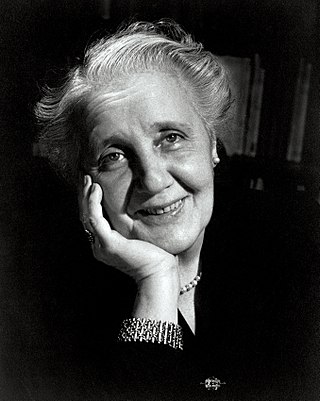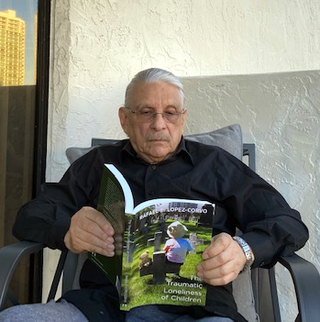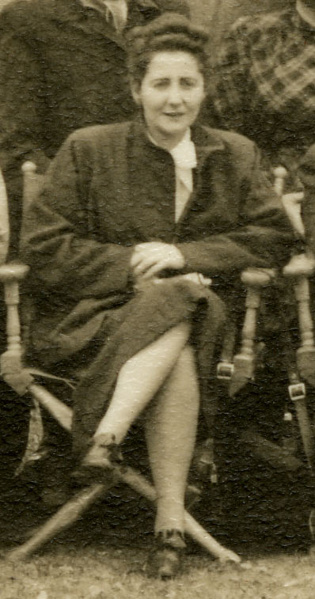Related Research Articles
Psychoanalysis is a set of theories and therapeutic techniques that deal in part with the unconscious mind, and which together form a method of treatment for mental disorders. The discipline was established in the early 1890s by Sigmund Freud, whose work stemmed partly from the clinical work of Josef Breuer and others. Freud developed and refined the theory and practice of psychoanalysis until his death in 1939. In an encyclopedic article, he identified the cornerstones of psychoanalysis as "the assumption that there are unconscious mental processes, the recognition of the theory of repression and resistance, the appreciation of the importance of sexuality and of the Oedipus complex." Freud's colleagues Alfred Adler and Carl Gustav Jung developed offshoots of psychoanalysis which they called individual psychology (Adler) and analytical psychology (Jung), although Freud himself wrote a number of criticisms of them and emphatically denied that they were forms of psychoanalysis. Psychoanalysis was later developed in different directions by neo-Freudian thinkers, such as Erich Fromm, Karen Horney, and Harry Stack Sullivan.

Wilfred Ruprecht Bion DSO was an influential English psychoanalyst, who became president of the British Psychoanalytical Society from 1962 to 1965.
Psychoanalytic theory is the theory of personality organization and the dynamics of personality development relating to the practice of psychoanalysis, a clinical method for treating psychopathology. First laid out by Sigmund Freud in the late 19th century, psychoanalytic theory has undergone many refinements since his work. The psychoanalytic theory came to full prominence in the last third of the twentieth century as part of the flow of critical discourse regarding psychological treatments after the 1960s, long after Freud's death in 1939. Freud had ceased his analysis of the brain and his physiological studies and shifted his focus to the study of the psyche, and on treatment using free association and the phenomena of transference. His study emphasized the recognition of childhood events that could influence the mental functioning of adults. His examination of the genetic and then the developmental aspects gave the psychoanalytic theory its characteristics.

Melanie Klein was an Austrian-British author and psychoanalyst known for her work in child analysis. She was the primary figure in the development of object relations theory. Klein suggested that pre-verbal existential anxiety in infancy catalyzed the formation of the unconscious, which resulted in the unconscious splitting of the world into good and bad idealizations. In her theory, how the child resolves that split depends on the constitution of the child and the character of nurturing the child experiences. The quality of resolution can inform the presence, absence, and/or type of distresses a person experiences later in life.

Donald Woods Winnicott was an English paediatrician and psychoanalyst who was especially influential in the field of object relations theory and developmental psychology. He was a leading member of the British Independent Group of the British Psychoanalytical Society, President of the British Psychoanalytical Society twice, and a close associate of Marion Milner.
Object relations theory is a school of thought in psychoanalytic theory and psychoanalysis centered around theories of stages of ego development. Its concerns include the relation of the psyche to others in childhood and the exploration of relationships between external people, as well as internal images and the relations found in them. Thinkers of the school maintain that the infant's relationship with the mother primarily determines the formation of its personality in adult life. Particularly, attachment is the bedrock of the development of the self or the psychic organization that creates the sense of identity.
In development psychology, Melanie Klein proposed a "(psychic) position theory" instead of a "(psychic) stage theory".

Karl Abraham was an influential German psychoanalyst, and a collaborator of Sigmund Freud, who called him his 'best pupil'.
Splitting is the failure in a person's thinking to bring together the dichotomy of both perceived positive and negative qualities of something into a cohesive, realistic whole. It is a common defense mechanism wherein the individual tends to think in extremes. This kind of dichotomous interpretation is contrasted by an acknowledgement of certain nuances known as "shades of gray".
Love and hate as co-existing forces have been thoroughly explored within the literature of psychoanalysis, building on awareness of their co-existence in Western culture reaching back to the “odi et amo” of Catullus, and Plato's Symposium.
Robert Douglas Hinshelwood is an English psychiatrist and academic. He is a Professor Emeritus of Psychoanalytic Studies at the University of Essex. He trained as a doctor and psychiatrist. He has taken an interest in the Therapeutic Community movement since 1974, and was founding editor of The International Journal of Therapeutic Communities, having edited, with Nick Manning, Therapeutic Communities: Reflections and Progress.

Rafael E. Lopez-Corvo is a Venezuelan-born medical doctor, psychiatrist and psychoanalyst. He is a former associate professor at Ottawa and McGill Universities and Program Director of Child and Adolescents Unite at the Douglas Hospital, McGill University in Montreal, Canada. He was also a member of the editorial board of the International Journal of Psycho-Analysis for Latin-America. Likewise, he is a training and supervising psychoanalyst for the International Psychoanalytic Association as well as the Canadian, Venezuelan and American Psychoanalytic Societies.

Joan Hodgson Riviere was a British psychoanalyst, who was both an early translator of Freud into English and an influential writer on her own account.
Hanna Segal was a British psychoanalyst of Polish descent and a follower of Melanie Klein. She was president of the British Psychoanalytical Society, vice-president of the International Psychoanalytical Association, and was appointed to the Freud Memorial Chair at University College, London (UCL) in 1987. The American psychoanalyst James Grotstein considered that "received wisdom suggests that she is the doyen of "classical" Kleinian thinking and technique." The BBC broadcaster Sue Lawley introduced her as "one of the most distinguished psychological theorists of our time,"
The term reparation was used by Melanie Klein (1921) to indicate a psychological process of making mental repairs to a damaged internal world. In object relations theory, it represents a key part of the movement from the paranoid-schizoid position to the depressive position — the pain of the latter helping to fuel the urge to reparation.
Narcissistic defenses are those processes whereby the idealized aspects of the self are preserved, and its limitations denied. They tend to be rigid and totalistic. They are often driven by feelings of shame and guilt, conscious or unconscious.
Paranoid anxiety is a term used in object relations theory, particularly in discussions about the Paranoid-schizoid and depressive positions. The term was frequently used by Melanie Klein, especially to refer to a pre-depressive and persecutory sense of anxiety characterised by the psychological splitting of objects.
Narcissistic neurosis is a term introduced by Sigmund Freud to distinguish the class of neuroses characterised by their lack of object relations and their fixation upon the early stage of libidinal narcissism. The term is less current in contemporary psychoanalysis, but still a focus for analytic controversy.
Symbolic equation is the term used in Kleinian psychoanalysis for states of thinking which equate current objects with those of the past, rather than finding a resemblance between the two sets.

Elisabeth Rozetta Geleerd Loewenstein was a Dutch-American psychoanalyst. Born to an upper-middle-class family in Rotterdam, Geleerd studied psychoanalysis in Vienna, then London, under Anna Freud. Building a career in the United States, she became one of the nation's major practitioners in child and adolescent psychoanalysis throughout the mid-20th century. Geleerd specialized in the psychoanalysis of psychosis, including schizophrenia, and was an influential writer on psychoanalysis in childhood schizophrenia. She was one of the first writers to consider the concept of borderline personality disorder in childhood.
References
- ↑ Neville Symington, Narcissism (1993) p. xi
- ↑ Danielle Quinodoz, Emotional Vertigo (2002) p. 148
- ↑ "Therapy for Depression: Approaches and Outcomes" . Retrieved 2024-06-04.
- ↑ Hanna Segal, Klein (1979) p. 135
- ↑ "Addiction and Depression: What's the Connection". 2022-05-10. Retrieved 2023-04-16.
- ↑ Danielle Quinodoz, Emotional Vertigo (2002) p. 149
- ↑ A. Bateman/J. Holmes, Introduction to Psychoanalysis (1999) p. 179
- ↑ Hanna Segal, Introduction to the Work of Melanie Klein (1964) p. 64
- ↑ Hanna Segal, Klein (1979) p. 81
- ↑ Jaques, Elliott (1953). "On the Dynamics of Social Structure: A Contribution to the Psycho-Analytical Study of Social Phenomena". Human Relations. 6 (1): 3–24. doi:10.1177/001872675300600101.
- ↑ Didier Anziou, Freud's Self-Analysis (1986) p. 182 and p. 581